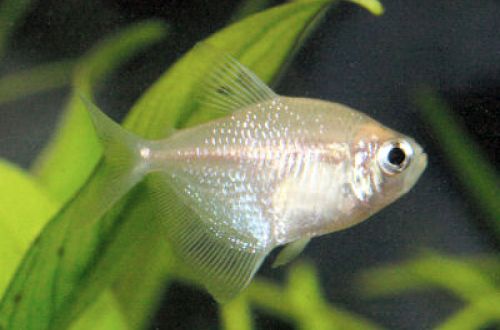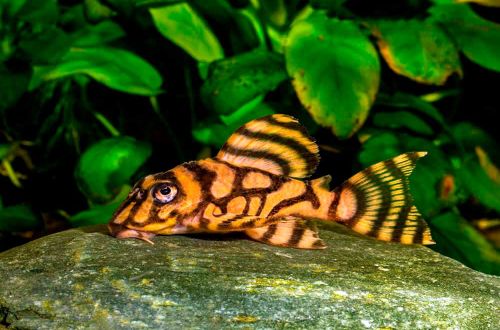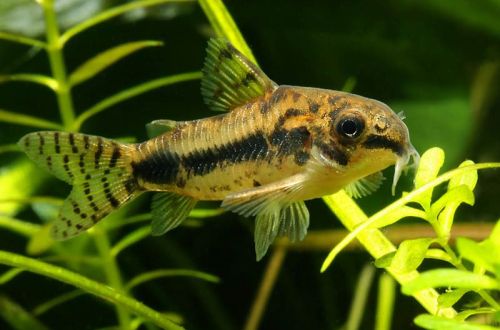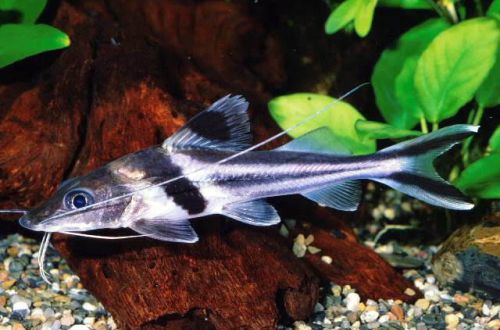
White Tetra
The white tetra, scientific name Gymnocorymbus ternetzi, belongs to the Characidae family. A widely available and popular fish, it is an artificially bred breeding form from the Black Tetra. Not demanding, hardy, easy to breed – a good choice for beginner aquarists.

Contents
Habitat
Artificially bred, does not occur in the wild. It is grown both in specialized commercial nurseries and home aquariums.
Description
A small fish with a high body, reaches a length of no more than 5 cm. The fins are larger than those of their predecessor, veil forms have been bred, in which the fins can compete in beauty with goldfish. The coloration is light, even transparent, sometimes vertical stripes can be seen in the front of the body.
Food
For Tetrs, there is a large selection of special feeds containing all the necessary elements, including freeze-dried meat products. If desired, you can diversify the diet with bloodworms or large daphnia.
Maintenance and care
The only important requirement is clean water. A high-performance filter and regular water changes of 25%-50% every two weeks do an excellent job of this task. From the equipment, a heater, an aerator and a filtration system should be installed. Since the fish prefer subdued light, there is no need for additional lighting if the aquarium is located in the living room. Enough of the light that enters the room.
The design welcomes low plants planted in groups, keep in mind that they must be shade-loving, capable of growing in low light. Soil of dark fine gravel or coarse sand, pieces of wood, intertwined roots, snags are suitable as decor
Social behavior
Relatively peaceful fish, calmly perceives neighbors of a similar or larger size, however, small species will be subject to constant attacks. Keeping a flock of at least 6 individuals.
Sexual differences
The differences are in the shape and size of the fins. The dorsal fin of the male is sharper, the anal fin is not uniform in height, it is long near the abdomen, and becomes low closer to the tail, in females the “skirt” is symmetrical, in addition, it has a large abdomen.
Breeding / breeding
Spawning is carried out in a separate tank, because the fish are prone to eating their young. A spawning aquarium of 20 liters is quite sufficient. The composition of the water should be similar to the main aquarium. The set of equipment consists of a filter, a heater, an aerator and, this time, lighting fixtures. The design uses groups of low plants and a sandy substrate.
Spawning can start at any time. When the female has a large belly, then it’s time to transplant the pair into a separate tank. After some time, the female releases eggs into the water, and the male fertilizes it, all this happens above the thickets of plants, where the eggs subsequently fall. If the plants are located in several groups, the pair will spawn in several zones at once. At the end, they are returned to the general aquarium.
The incubation period lasts a couple of days. Feed the fry with powdered products, Artemia nauplii.
Diseases
In cold water, fish are prone to developing skin diseases. Under optimal conditions, health problems do not arise, despite the fact that artificial species are less hardy than their predecessors. Read more about symptoms and treatments in the Aquarium Fish Diseases section.





